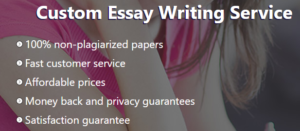COM 231 Journal Reflection 3
COM 231 Journal Reflection 3
Each week, you are required to submit a journal entry of a minimum of 150 words, addressing a specified topic.
Topic:
Examine the ethical nature of what you read and write. Give examples of discrete unethical writings and blatant aberrations. Are they simple fallacies or outright lies? Have you ever found yourself writing material of a less than ethical standard? Craft your response so that it correlates with the Topic 3 text, lectures, and discussions.
GCU style is not required, but solid writing skill is expected.
COM 231 Grand Canyon Week 3 Assignment Ethical Issues and Tactics Essay
Write a 250-500-word essay that clearly violates an ethical standard. Explain what ethical standard you violated. What effect do you feel it will have on the audience? Note: Do not be crude, rude, or offensive in this essay. Simply demonstrate your grasp of ethics.
Use the GCU eLibrary to locate at least two additional resources to support your essay.
You are not required to submit this assignment to Turnitin, unless otherwise directed by your instructor. If so directed, refer to the Student Success Center for directions. Only Word documents can be submitted to Turnitin.
Then, rewrite the same essay so it does not violate that ethical standard. Total word count for both essays should not exceed 1,000 words.
Prepare this assignment according to the guidelines found in the GCU Style Guide, located in the Student Success Center.
COM 231 Grand Canyon Week 3 Collaborative Learning Community: Artifacts Presentation
This is a CLC assignment.
According to Merriam Webster’s online dictionary, an artifact is “something created by humans usually for a practical purpose.” Use this or a similar definition as a framework for selecting an artifact that is subtly persuasive. The artifact may use images and visual effects to induce persuasion. The artifact must include language in the form of written or spoken words.
As a group, determine the effectiveness of the artifact. Using one, some, or all of the ideas we have read or talked about, explain why the message was or was not effective. What ideas could have improved the artifact?
Apply the theories and ideas from the text, readings, and discussions to explain the persuasive nature of the artifact.
Prepare a presentation in a format of your choosing (i.e., PowerPoint, Word, etc.) to show what you learned. It must include at least a title page with each group members’ name; each main point must be clearly identified with supporting evidence; and a clear conclusion and a list of references are required.
You might address some of the following ideas in your presentation:
Describe the audience the message was designed for.
Describe how the artifact qualifies as persuasion under the definitions we talked about.
What theories explain the effectiveness of the artifact?
What theories might be used to improve the effectiveness of the artifact?
Was the artifact written ethically?
How could it be written differently so that it would be ethical?
Make it fun, but informative, showing depth of thought and critical thinking.
Use the following coupon code :
TOPCLASS
